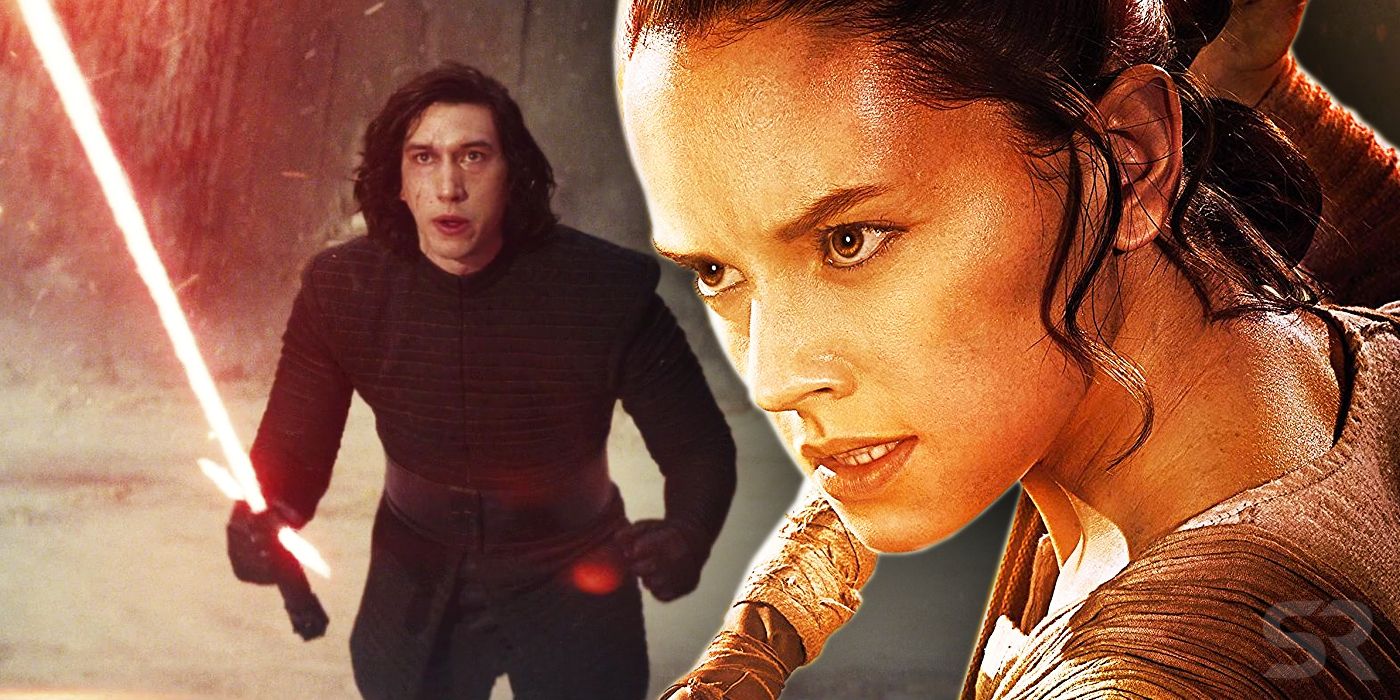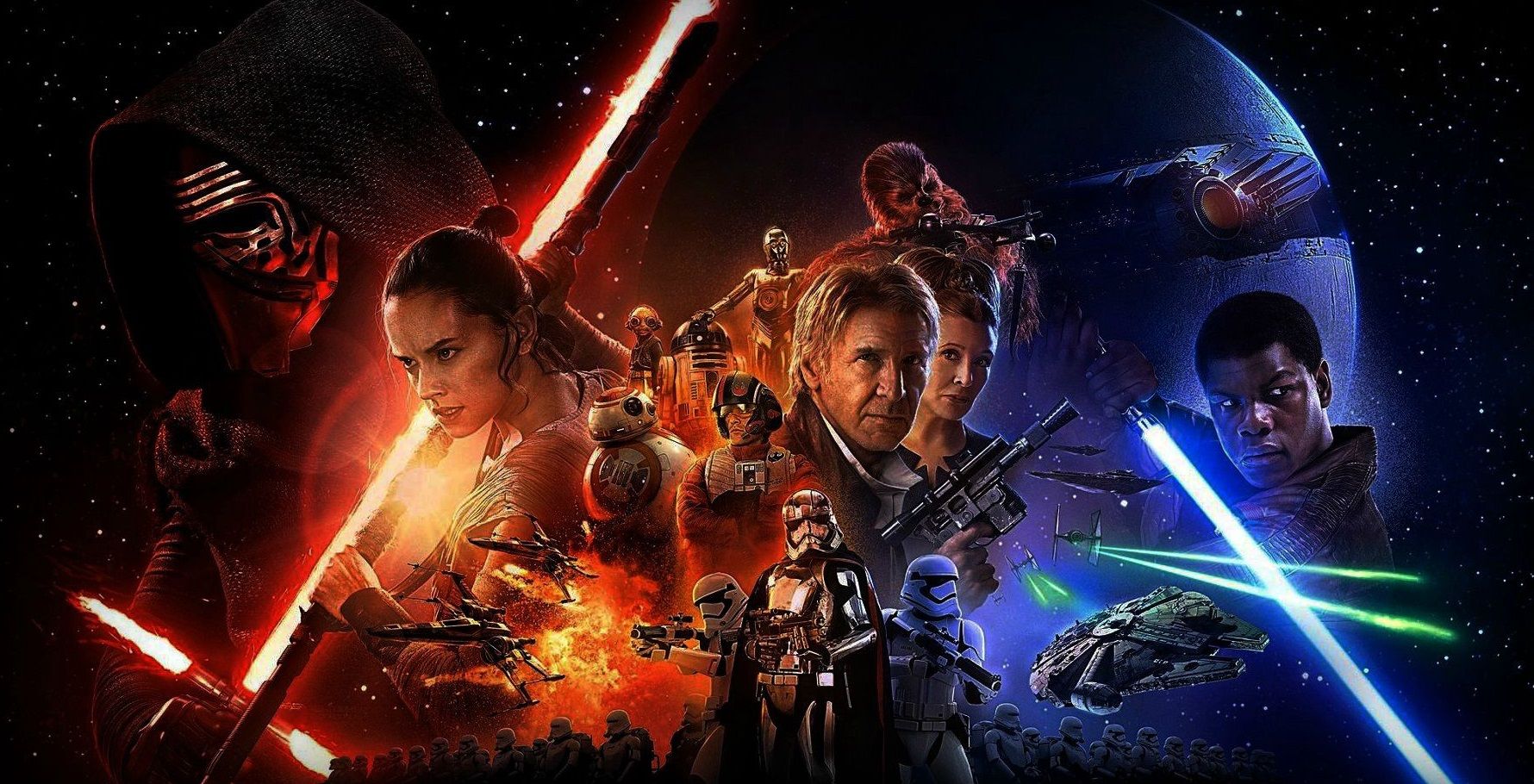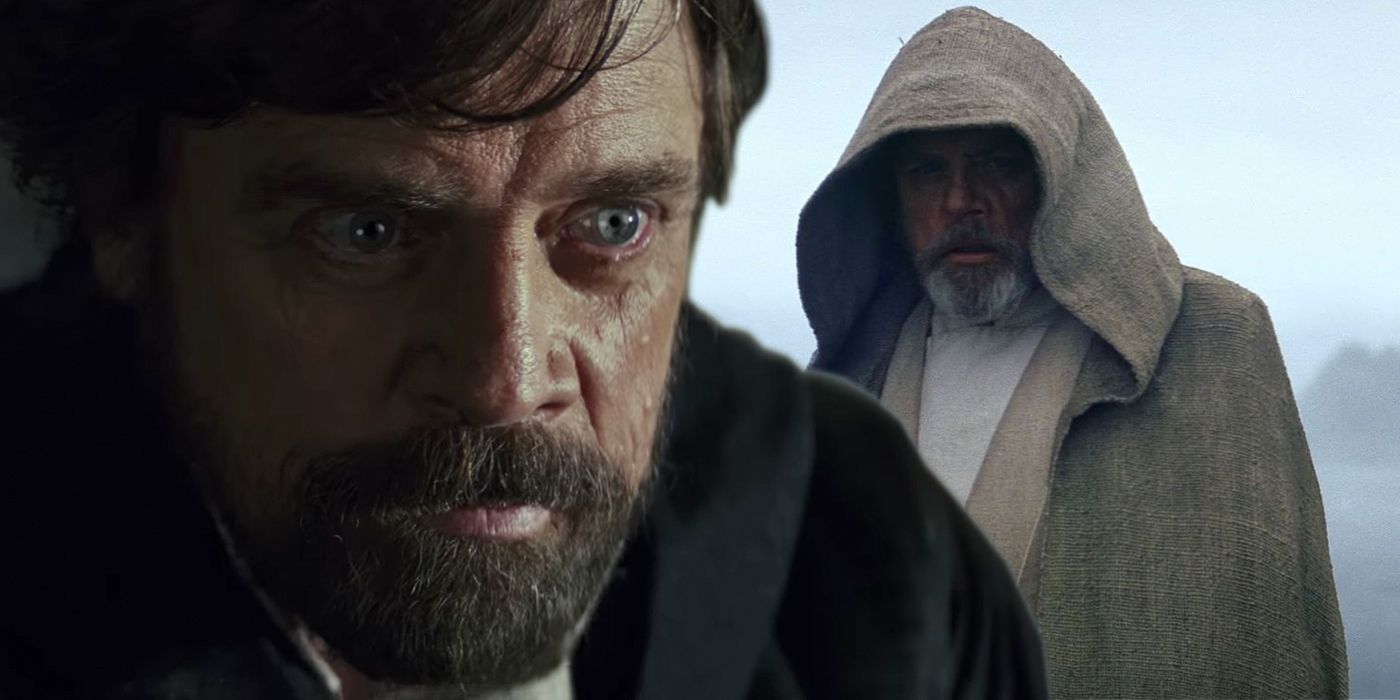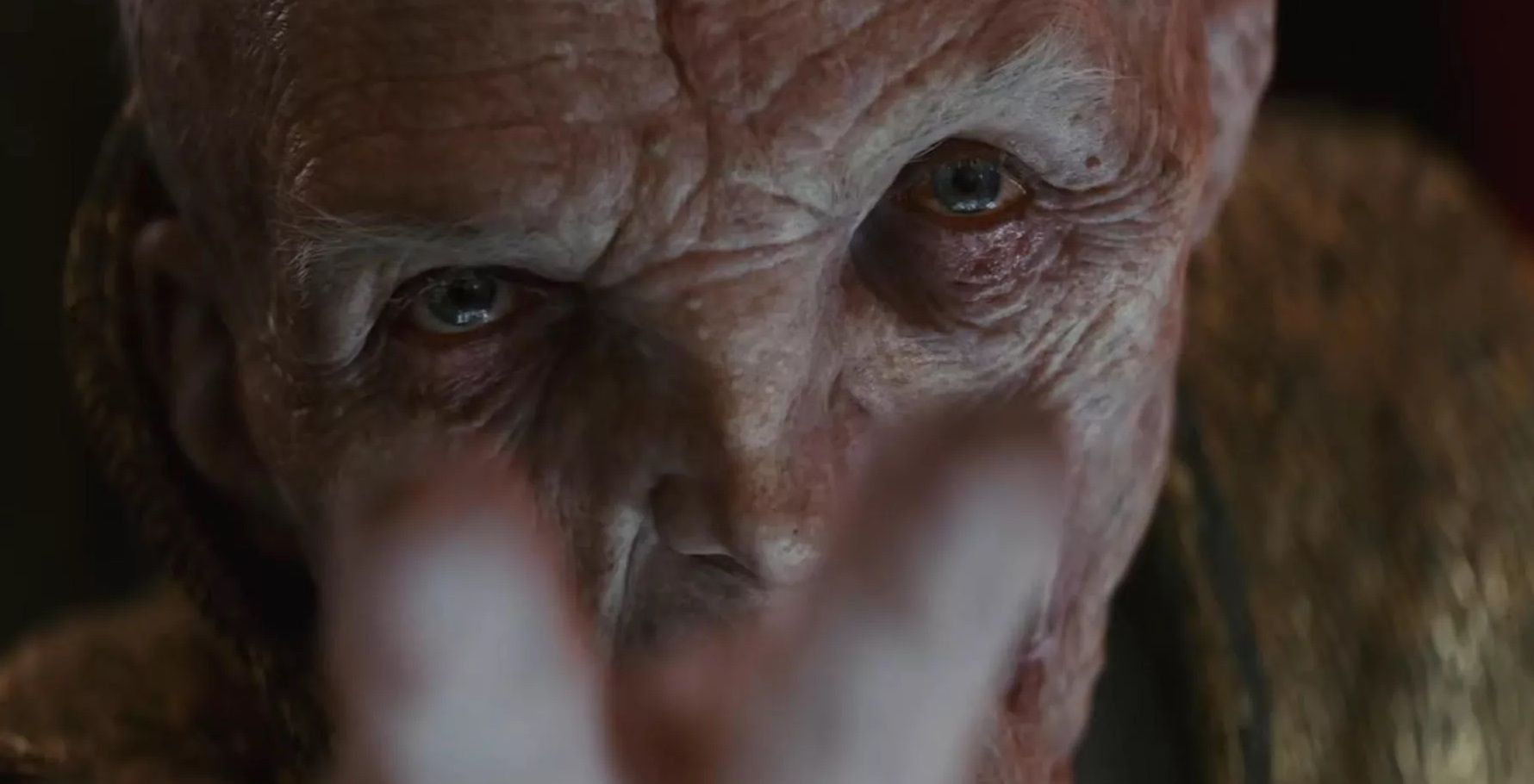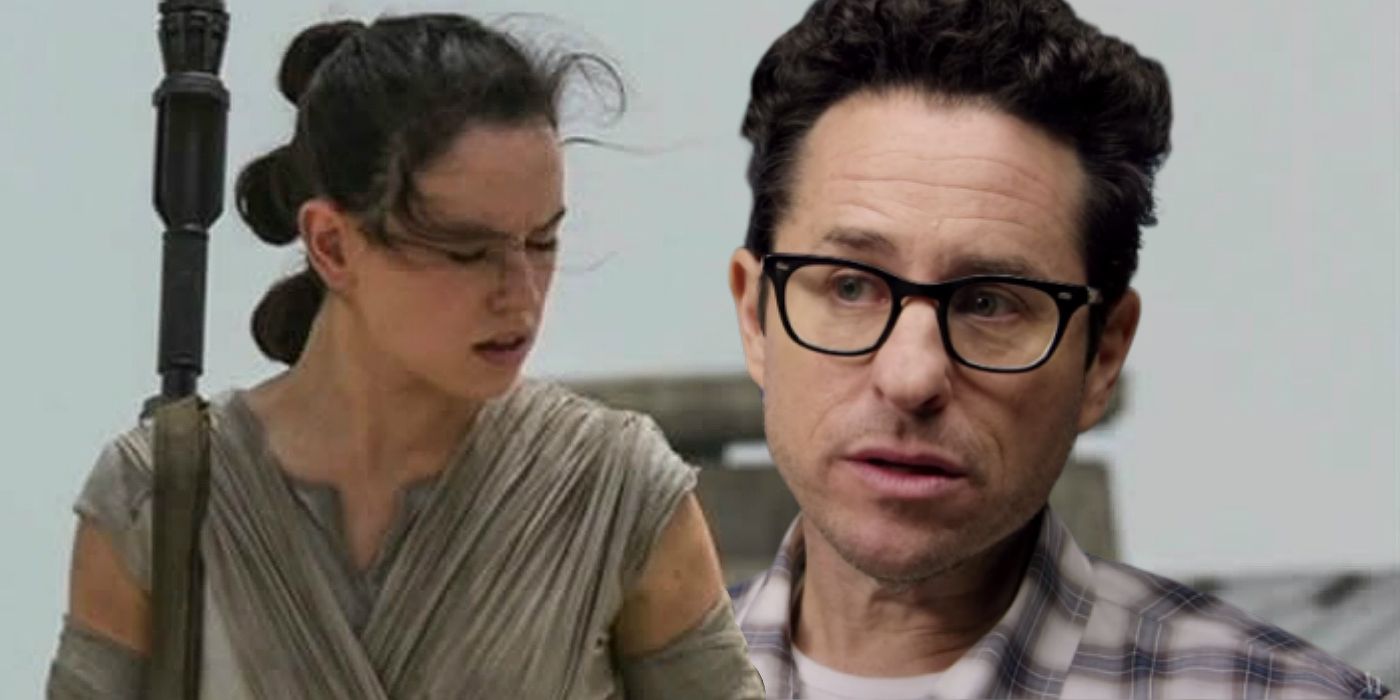J.J. Abrams is back in the director’s chair for Star Wars: Episode IX, and he needs to take one big lesson from his work on Star Wars: The Force Awakens: it can’t be another mystery box film. Abrams was a popular pick when he was announced as Colin Trevorrow’s replacement back in 2017. Not only had he proven he could make a Star Wars film that people mostly agreed was good, if derivative, but he’s long since shown himself as a blockbuster filmmaker of real skill.
For all his visual flair (and lens flare), though, Abrams is perhaps most well-known for setting things up and then moving on to a new project. This has been his way of working since LOST, which he helped create - including directing its pilot episode - and then settled into an executive producer role. He’s a master of creation, but what about when he has to follow it through? Star Trek Into Darkness was a rare occasion on that front.
Related: Is Lucasfilm Copying Avengers: Endgame With The Star Wars 9 Title Reveal?
One of the common complaints against the Star Wars sequel trilogy is its lack of cohesion. With Star Wars: Episode IX, Abrams has a chance to tie everything together, but he can’t repeat what he did with Star Wars: The Force Awakens. That goes for not simply rhyming with the original Star Wars trilogy, but perhaps even more so goes for his mystery box style of filmmaking and making audiences ask questions without having the answers.
- This Page: Abrams' Force Awakens Mystery Box Worked (For A Time)
- Page 2: Star Wars 9 Needs to Give Answers After Last Jedi Broke The Mystery Box
J.J. Abrams Made The Force Awakens A Mystery Box
Abrams revealed his approach to storytelling at a TED Talk back in 2007. Introducing audiences to a box bought from a magic shop, he said he takes inspiration from this “mystery box”. He said: “Mystery is more important than knowledge.” Looking at his entire career, audiences can see how it’s been applied; the mystifying questions raised by LOST, the secrecy around Star Trek Into Darkness, the unknowns of the Cloverfield franchise, and he brought it to Star Wars as well.
The marketing for Star Wars: The Force Awakens gave little away, and actors were sworn to secrecy. “Loose lips sink starships,” after all. That continued into the movie itself, though, as a number of new characters and factions were introduced, largely without any explanation. There was Supreme Leader Snoke, the new Emperor-esque figure who ruled the First Order and turned Ben Solo to the Dark Side. A mention of the Knights of Ren, whom Kylo is the master of. There’s Rey, a Force-sensitive young woman from a desert planet who dreams of being reunited with her family.
Related: Every Story Reveal From J.J. Abrams' Star Wars 9 Photo
The First Order, an Empire redux that was born out of Imperial remnants. Maz Kanata, who seems connected to the Force and somehow has the Skywalker lightsaber. And then there’s Luke Skywalker himself, far removed from the action and hidden away from everyone he knows, for... reasons. All of these things are created by Abrams, but with little actual substance. They're boxes left unopened, riddles to be solved, and questions to be unanswered. In short, Abrams took one of the biggest releases of the decade and turned it into a mystery box.
Why This Worked For Episode 7, But Not The Sequel Trilogy
In the context of The Force Awakens, Abrams' mystery boxes actually work well. This was the first movie in a trilogy, but, more importantly, the onus here was on bringing Star Wars back. The franchise had been dormant for 10 years, so it was imperative to create something that really felt like Star Wars. That we got such wonderful new characters was the icing on the cake, in no small part thanks to the performances of the new cast, but they were shrouded in the aforementioned mysteries.
It kept The Force Awakens exciting, and for a fan base who’d been starved, gave them something to obsess over. From Snoke’s identity to Rey’s parentage, the internet had a good couple of years to run wild with speculation and theories. That’s fun, but it also doesn’t lead to much of a trilogy, and it created problems going forward.
Related: How Star Wars 9's Trailers Can Avoid Repeating The Last Jedi's Backlash
Rian Johnson came into Star Wars: The Last Jedi, gifted with new characters but also a lot of questions fans wanted answering. Luke, Kylo, Rey, and Snoke had to be major players in The Last Jedi, but The Force Awakens had kept so much of their story hidden that it was going to be impossible to answer everything. Abrams had thrown a whole bunch of ideas into the galaxy; Johnson had to then open all the boxes, sift through the contents, and figure out what was actually worth keeping for his movie (and Star Wars: Episode IX, for that matter) and what could be thrown out.
Page 2 of 2: Star Wars 9 Needs to Give Answers After Last Jedi Broke The Mystery Box
How The Last Jedi Broke The Mystery Box
When the reins were being passed from Abrams to Johnson, the latter was simply handed a bunch of boxes. They might’ve contained great toys, designed to help capture the imagination. They could just have easily as contained snakes. Johnson didn’t want to play the mystery box game, so he broke the boxes and told his own story. Supreme Leader Snoke wasn’t Darth Plagueis; he wasn’t really important at all. Johnson recognized that what mattered most was his connection to Kylo Ren - less the part he played in making him, but more the part he was playing in holding him back from his full potential.
Likewise, Rey could have been a Skywalker, or a Kenobi, or even a Palpatine. But that would’ve been just another powerful Force-user of a lineage audiences had already seen plenty of, which spoke to the power of a name more than the Force itself and the core idea that anyone could be a hero (which is rooted in George Lucas’ Star Wars). It’s more interesting, unique, and challenging to have Rey be no one. Finding a reason for Luke to be on Ahch-To was even more difficult. What could have made one of the greatest Jedi of all time go into exile at a time of conflict? To stay hidden as one of his best friends is killed, and his sister desperately needs him?
Related: Star Wars 9 Theory: The Skywalker Saga's REAL Villain Unites Rey & Kylo
Abrams took the job because of the question “Who is Luke Skywalker?” get passed up the chance of an answer (aka knowledge) in favor of adding to the question (mystery). And so, Snoke dies. Rey learns the devastating truth. And Luke has cut himself off from the Force. The characters who matter most are pushed forward in bold new directions. The characters and plots that didn’t were left behind. Rather than mysteries, audiences had fully fleshed-out, complex characters that they could truly understand, and that’s a great thing for Star Wars: Episode IX.
J.J. Abrams Needs To Give Answers In Star Wars 9
Abrams wasn’t supposed to direct Star Wars: Episode IX. Had things worked out as Lucasfilm intended, then Trevorrow would be helming the final installment. This is a position he’s never really been in before throughout his career. The moments he arguably has had to give answers - Star Trek Into Darkness and The Cloverfield Paradox, for instance - have been disappointing, but this is on another level with regards to wrapping up a story. How he handles it is key to Star Wars: Episode IX’s success, and to ending both the sequel trilogy and the Skywalker Saga.
Abrams has plenty to build upon for Star Wars: Episode IX. There’s the final act of the battle between the Resistance and the First Order and the rise of Kylo Ren as Supreme Leader, which is the closest thing audiences have seen to a Sith in the Star Wars sequels. Rey has the tools to make a new Jedi Order. There are still questions to be answered around things like the Knights of Ren. But mostly, there needs to be a real ending. To leave some things ambiguous is fine - good, even, when done right - but, for the most part, Abrams needs to wrap things up.
It’s no good, then, for Abrams to fall back on his favorite storytelling crutch. He can’t simply offer up a new bunch of question. He needs to give answers. He needs to have a real resolution and conclusion. In Star Wars: Episode IX, he needs to choose knowledge. Abrams must finally open the mystery boxes for the core Star Wars saga to successfully end.

